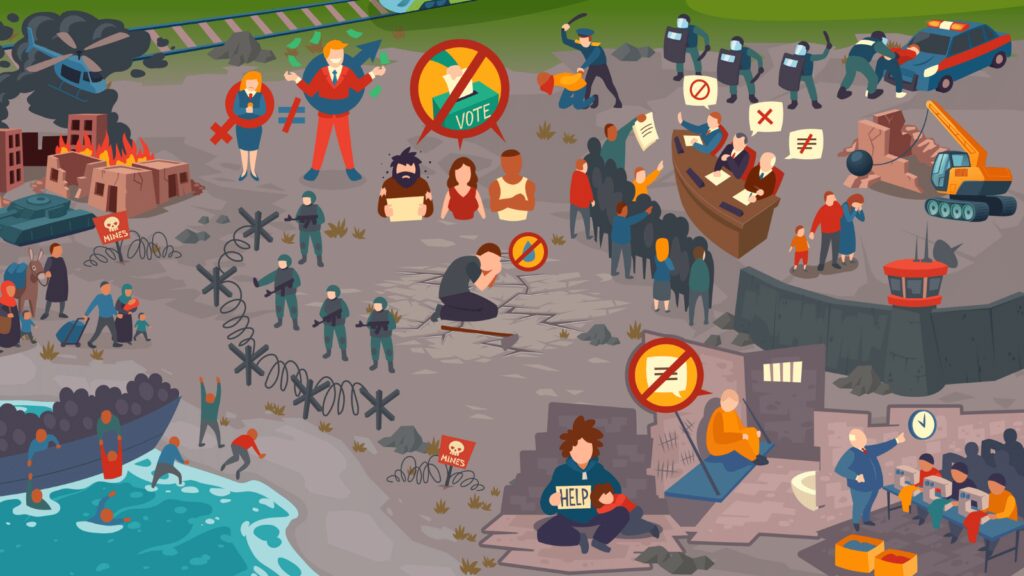Inequality is all about the distribution of power and resources, of the rights people can exercise, and opportunities they can access.
Some amount of inequality is inevitable. But inequality is problematic when it is of a degree that prevents people from living decent lives and fulfilling their rights.
RELEVANT SUSTAINABLE GOALS
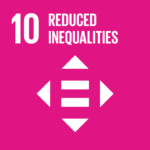
Inequality x Poverty
Inequality is closely linked to poverty. We cannot hope to reduce poverty without addressing inequality. The relationship between the two is complex and includes a number of dimensions:
- Poverty is relative. The context in which a person lives and the outcomes of others in their community has an important impact on their experience and what is necessary for them to participate fully in their society.
- Environmental resources are finite, so where wealth exists alongside deprivation, it is necessary to think about how available resources are distributed.
- Recognising and understanding horizontal inequalities, where people face exclusion and discrimination based on their identity, is critical to tackling the root cause of poverty and to Leave No One Behind.
- Economic inequality is closely linked to political inequalities, which create a self-perpetuating cycle, reinforcing division in society as the poorest people have less influence over political decision-making than the wealthiest people.
There is no single measure that can capture all aspects of inequality, nor a single dataset that provides comprehensive and timely data to underpin all inequality measures. As such, the facts and statistics included in this factsheet draw on a number of different datasets and use a variety of measures to understand the levels and trends of inequality. Each inequality measure and underlying dataset has its strengths and limitations and should be understood and interpreted based on this.
Inequality : Key Facts
1. Global inequality: Globally, the world is vastly unequal, with extreme wealth coexisting with extreme poverty. The poorest 50% of the global population share just 8.5% of total income. At the same time, the richest 10% of the global population earn over 50% of total income. (Fact 1)
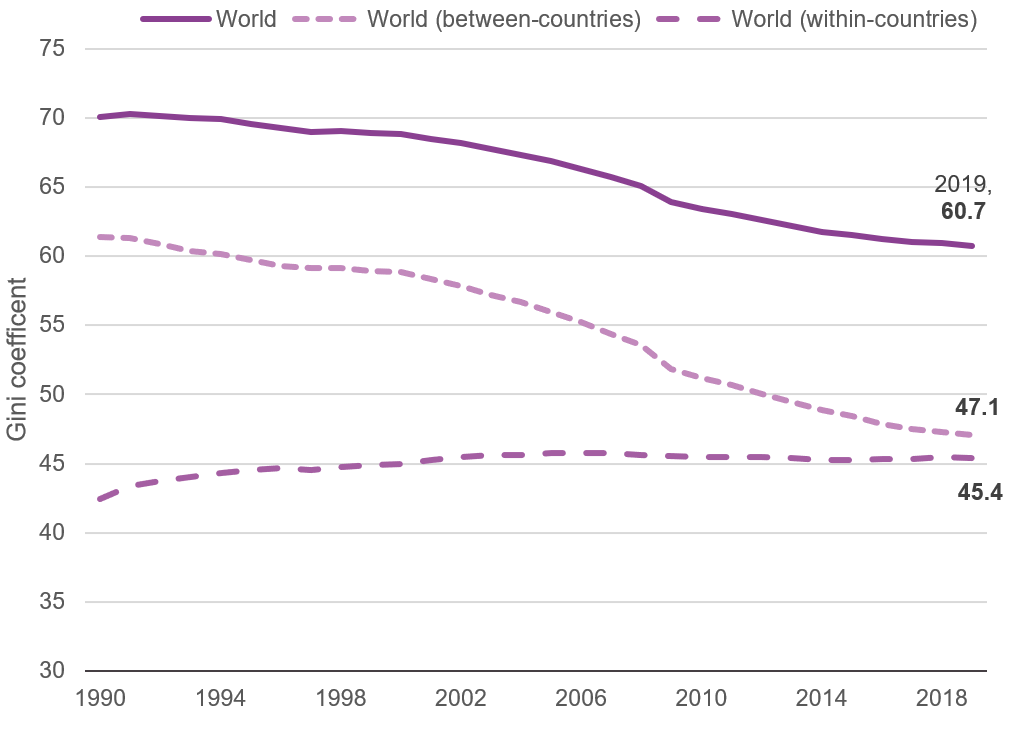
Note: Inequality as measured by the Gini coefficient.
2. Between-country income inequality: Between countries, income inequality is high, but the gap is narrowing. Between-country inequality accounts for two-thirds of global income inequality. However, between country inequality has decreased as previously low-income countries such as China and India have experienced faster growth than higher income countries.
ome amount of inequality is inevitable. But inequality is problematic when it is of a degree that prevents people from living decent lives and fulfilling their rights.

Available at: https://wir2022.wid.world/www-site/uploads/2021/12/Summary_WorldInequalityReport2022_English.pdf
3. Wealth inequality: The concentration of wealth inequality has intensified during the Covid-19 pandemic. When measuring economic inequality by wealth, the gap is even bigger than that measured by income. The wealthiest 10% of people in the world own 76% of total wealth. During the Covid-19 pandemic, billionaires around the world added US$1.9 and US$1.6 trillion to their net wealth in 2020 and 2021, respectively

Available at: https://ourworldindata.org/grapher/covid-vaccinations-vs-gdp-per-capita. Data from 13 January 2022.
4. Covid-19: The Covid-19 pandemic threatens to exacerbate and intensify the disadvantage of lower income countries. Despite initially impacting richer countries hardest, lower income countries face a much harder recovery as they have lower financial capacities to fund the economic recovery and much lower access to vaccines.
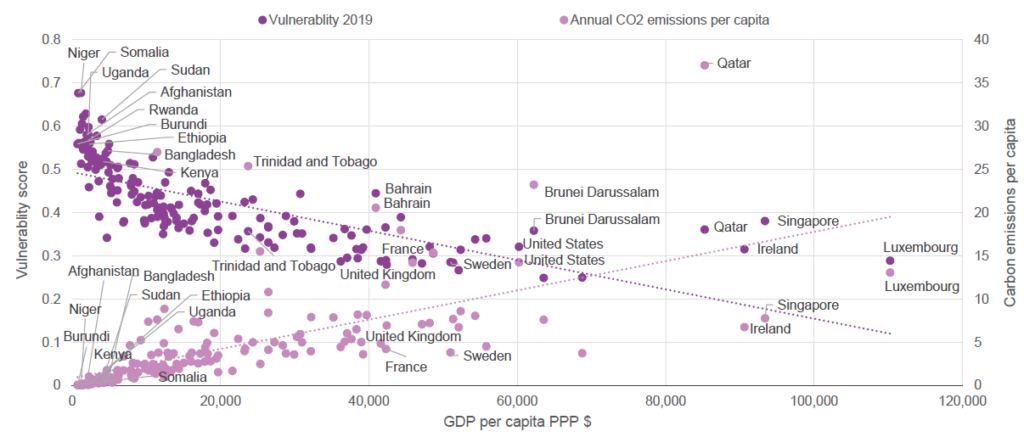
Available at: https://gain.nd.edu/our-work/country-index/download-data/ and, CO2 emissions from Our World in Data and GDP from World Bank
5. Climate change: Lower income countries, which did the least to cause climate change, will face the biggest costs. Between-country inequalities are likely to grow as the devastating and costly impacts of climate change are felt more acutely in lower income countries – those that did the least to cause it.

Note: LDC = least developed country
6. Finance: Development finance could be better used as a tool to tackle inequality. Finance that redistributes resources from higher to lower income countries to reach the poorest people can help reduce inequalities between and within countries. Official development assistance (ODA), in particular, is conceptually well placed to tackle the most complex needs in least developed countries (LDC), but its current scale and allocations fall short of this potential.
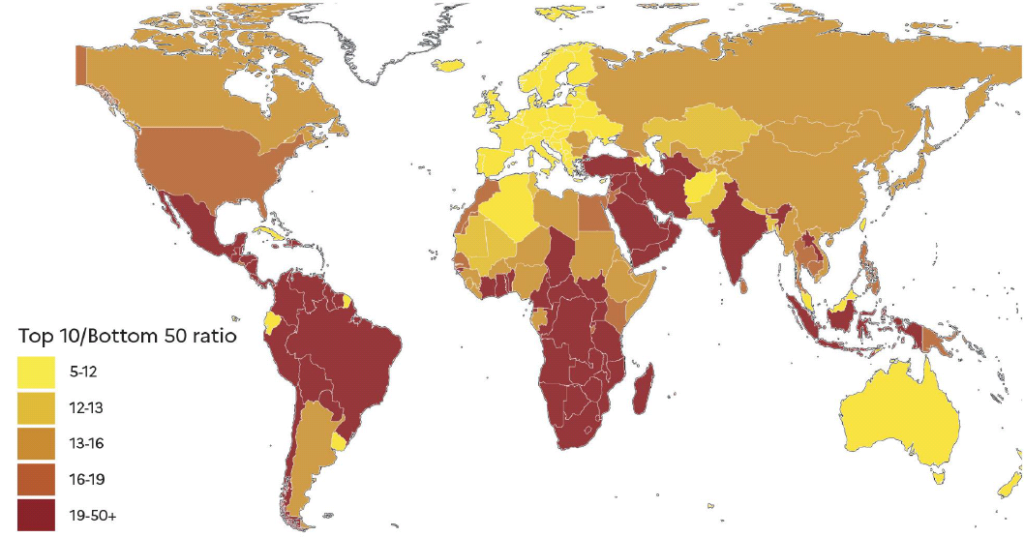
7. Horizontal inequalities: Economic inequalities intersect horizontal inequalities. Personal characteristics, such as gender, age, disability status, ethnicity, religion, migrant status and/or geography, can also intersect to exacerbate inequalities experienced by particular individuals and groups.
8. Within-country inequality: Inequalities within countries are influenced by a number of factors. The level of inequality within any given country or community depends upon numerous structural and contextual factors. Policy responses can also have a significant impact on inequality.
ABOUT DEVELOPMENT INITIATIVES :
Development Initiatives (DI) applies the power of data and evidence to build sustainable solutions. Our mission is to work closely with partners to ensure data- driven evidence and analysis are used effectively in policy and practice to end poverty, reduce inequality and increase resilience.
While data alone cannot bring about a better world, it is a vital part of achieving it. Data has the power to unlock insight, shine a light on progress and empower people to increase accountability.
The article was initially published on 20th March 2022.
You may also be interested in :
Three in Four People Want To Ban Single Use Plastic, Global Survey Finds


